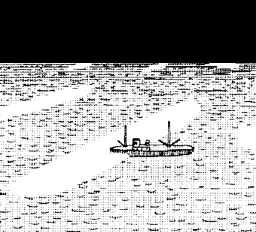 |
Science Frontiers ONLINE No. 80: Mar-Apr 1992 |
|
|
Aerial Bioluminescence
January 19, 1991. South China Sea. Aboard the m.v. Benavon. The vessel was heading for Singapore on a body of water noted for bioluminescent displays. Flashes of light were seen in the bow wave and the ship's wake, appearing to be both on the surface and slightly below. This type of display is rather common, but another, much rarer phenomenon was also present:
 In 1880 off the Malabar Coast of India, a vessel was engulfed in great waves of light floating above the sea. |
"At the same time as the above form of bioluminescence, there seemed to be a second type but it was difficult to pinpoint the source. The effect was that the atmosphere around the ship and extending to the horizon had some form of faint white illumination not provided by the light in the water, which was black apart from the previously described flashes. On the other hand, there was no obvious source in the sky either, which although virtually cloudless was very dark, and certainly darker than the atmosphere at the level of the ship.The only conclusion that the observers could come to was that this was a faint example of (to quote The Marine Observer's Handbook), 'luminescence in the air a few feet above the sea surface when there is no light in the water'. This form lasted for about 30 minutes, whereas the bright flashes continued for three or four hours before they too eventually ceased."
(Thompson, P.C.; "Bioluminescence," Marine Observer, 62:14, 1992.)
Comment. Many cases of aerial marine light displays have been cataloged. It is assumed by scientists that bioluminescent particles are somehow carried into the air from the ocean, but there is no evidence at all for this. It is quite possible that some marine phosphorescent displays are electrical rather than biological. Additional examples and discussion of possible aerial phosphores-cent displays available in GLW3 in our catalog: Lightning, Auroras. To order, visit: here.